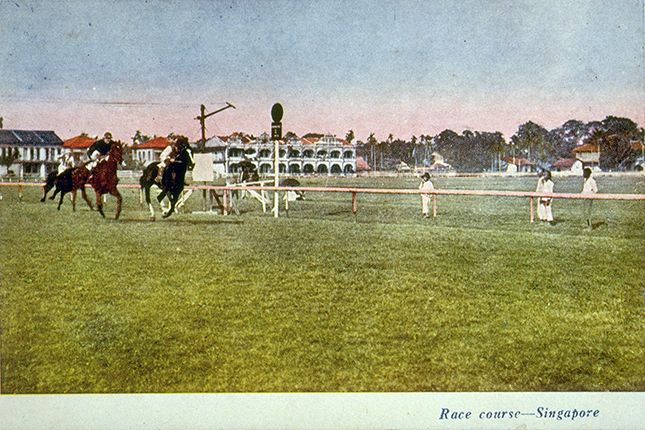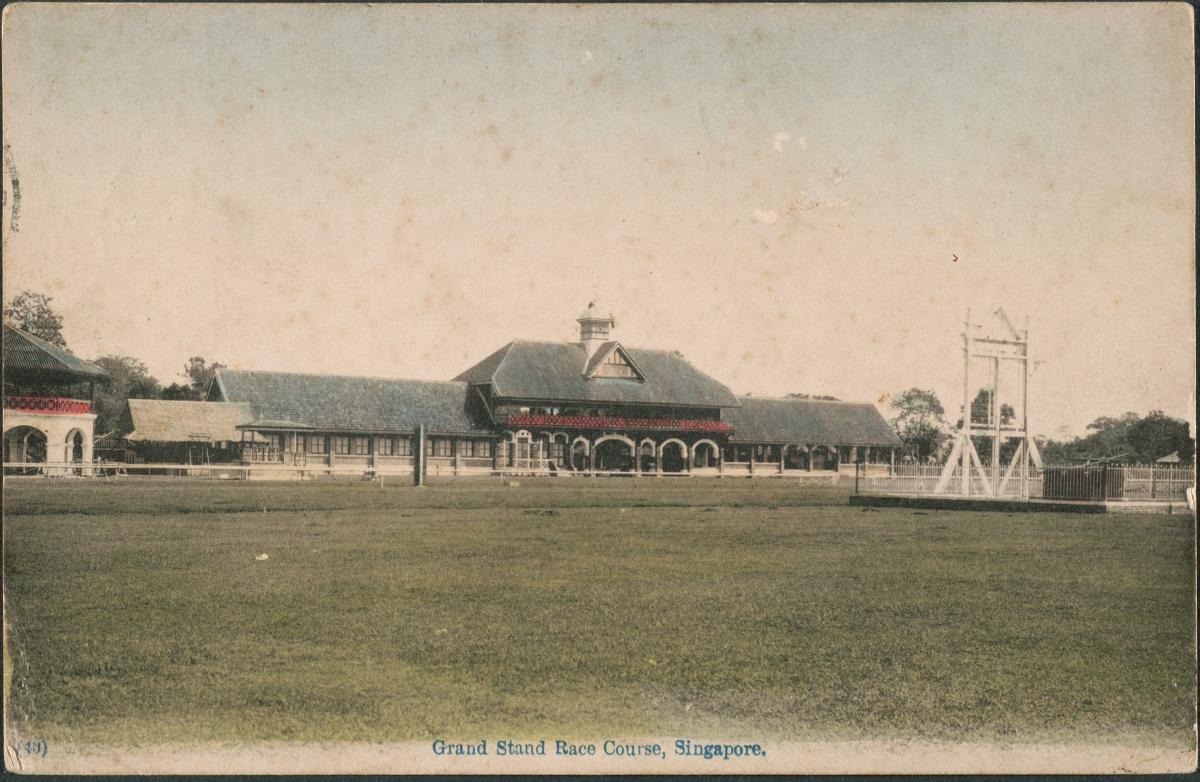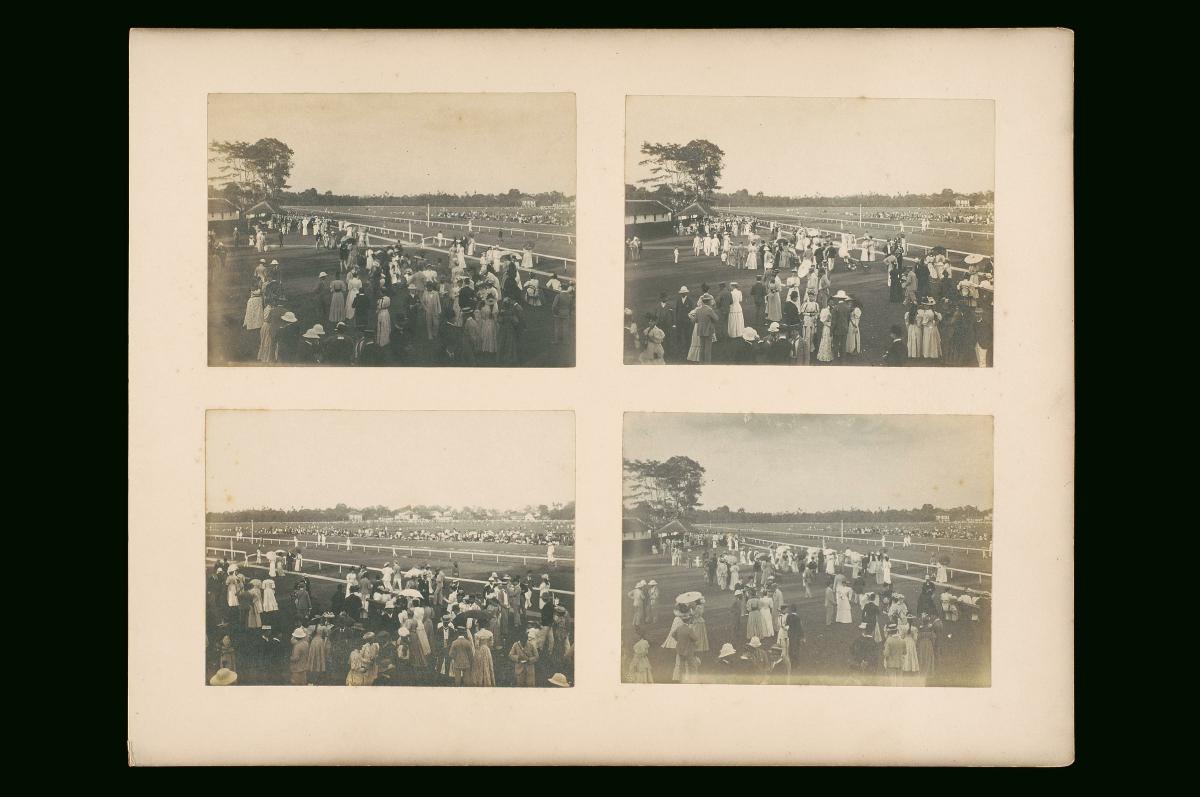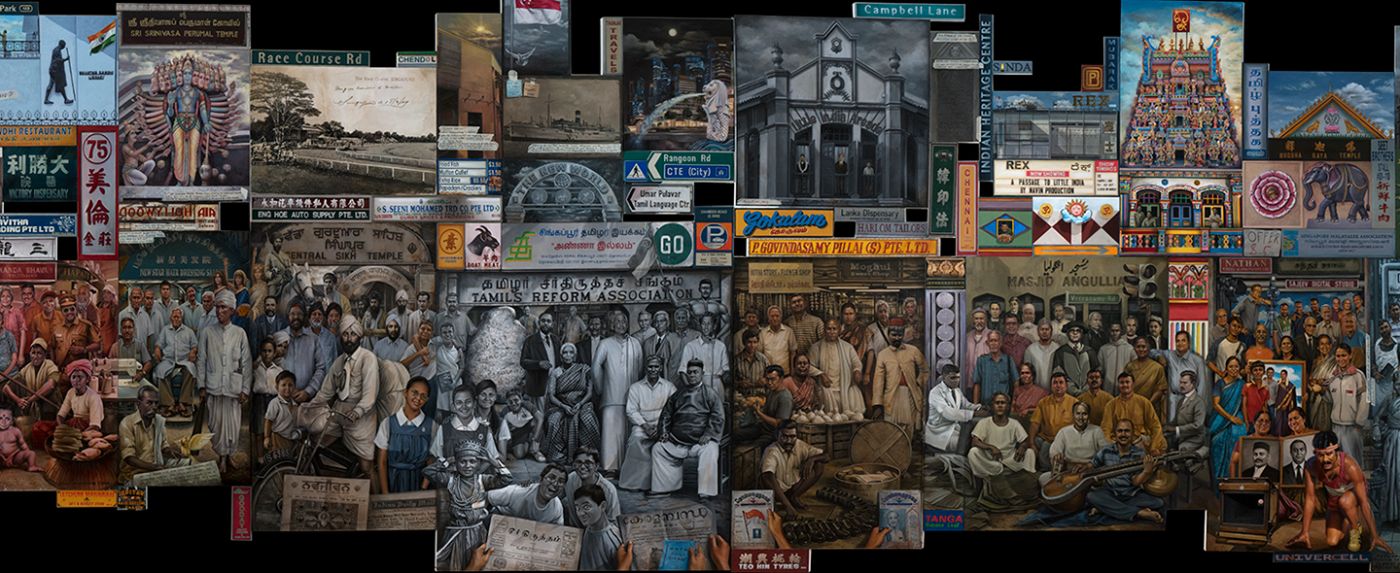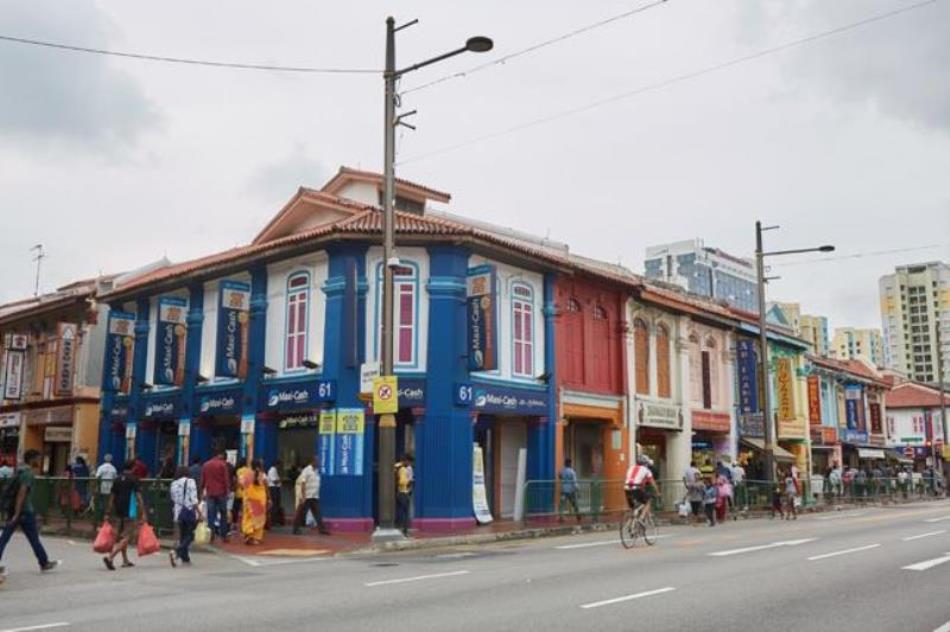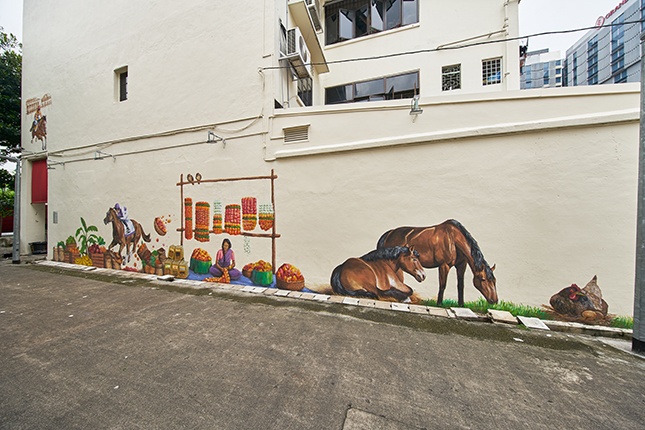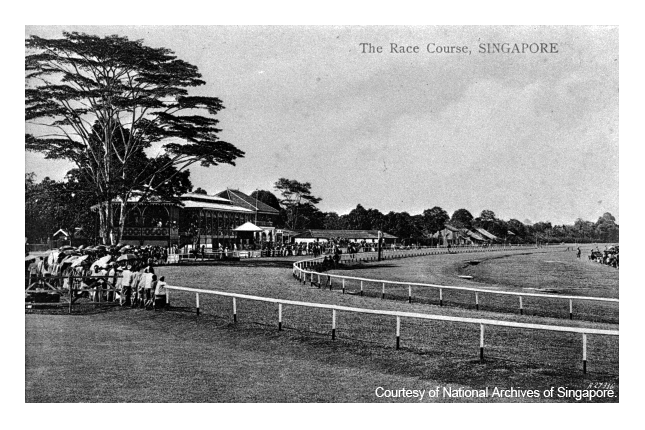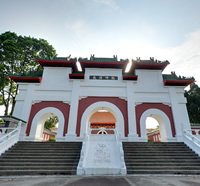The former racecourse was created by the Singapore Sporting Club which was established in 1842 by amateur horse racing enthusiasts. Its first members included William Macleod Read, Charles Spottiswoode and William Napier. They requested for a plot of land from the government for regular horse racing and were granted the Farrer Park site to develop into the Singapore Racecourse, which opened in 1843.
The first horse race was named the Singapore Cup and subsequent races were held twice a year. Horse racing gained the interest and attention of the wealthy Chinese in the 1860s, and they offered prize money for races with Cheong Hong Lim Cup and Confucius Cup. They came together again in the Autumn Meeting of 1869 and presented the Celestial Plate, which appeared as one of the events in the race programme for many years.
The racecourse also served as polo field and a golf course in the 1870s-90s. When there were no sporting activities, the grounds became a popular picnic spot. The first plane flown to Singapore landed here in 1919. After the racecourse moved to Bukit Timah, the old racecourse was renamed Farrer Park after RJ Farrer, President of the Municipal Commissioners.
During World War II, British Indian forces were assembled at Farrer Park by the Japanese two days after the British surrender. They urged these Indian soldiers to join the Indian National Army. Days later, thousands of Chinese were gathered and held here for a week before they became victims of the Sook Ching (“purge” in Mandarin) massacre.
After the war, Farrer Park remained popular for sports and also became a regular venue for election rallies. The sports played here included hockey, cricket and football. In 1971-73, the headquarters of the National Sports Promotion Board was also situated here. Today, residential blocks occupy part of Farrer Park, while Farrer Park Primary School occupies the site of the former Farrer Park Stadium.




